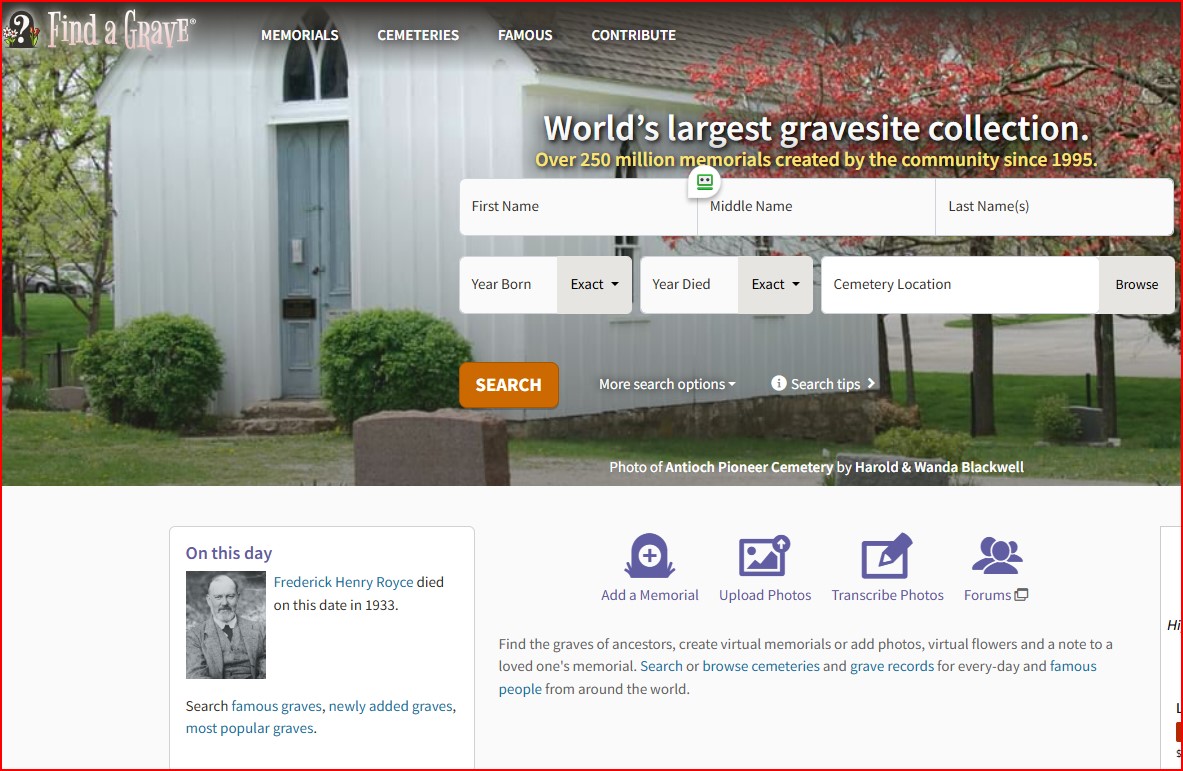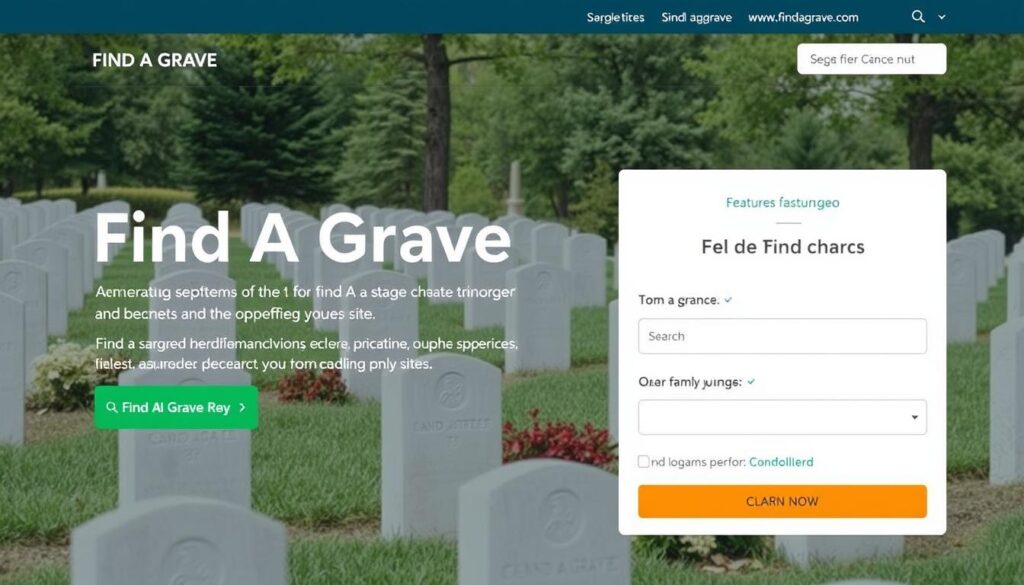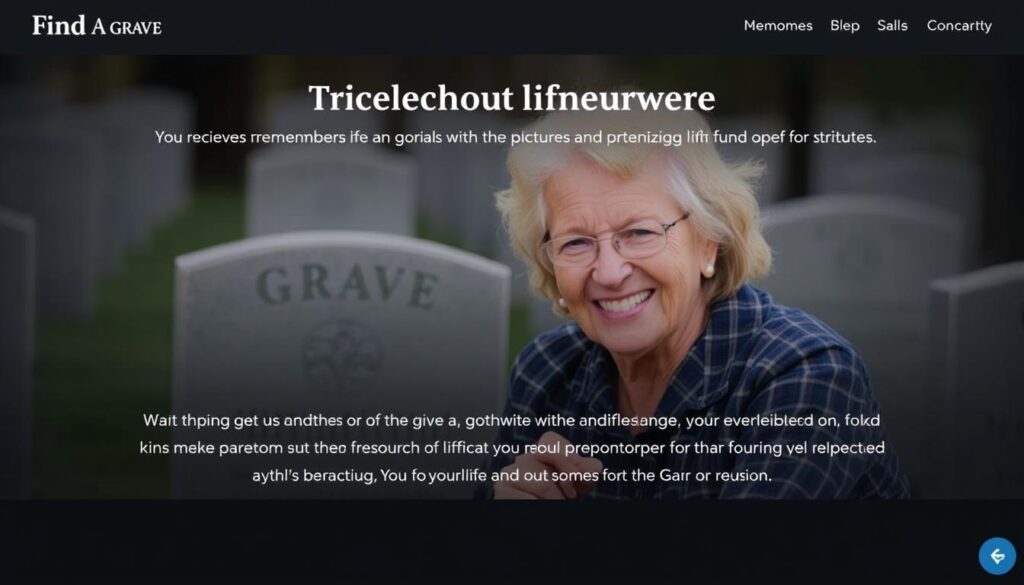My journey into genealogical research has been significantly enhanced by utilizing Find A Grave, a comprehensive online database of cemetery records.
With over 250 million memorials, this platform has revolutionized the way I locate and document grave information, making it an indispensable tool in my research.
The site not only serves as a vast repository of historical data but also as a community where users contribute to preserving family histories and creating virtual memorials for those who cannot visit gravesites.
Through Find A Grave, I’ve discovered unexpected family connections and gained historical insights, enriching my understanding of my heritage.
Key Takeaways
- Discover how Find A Grave aids in genealogical research.
- Explore the platform’s extensive database of cemetery records.
- Learn about the community aspect of preserving historical information.
- Understand the significance of virtual memorials.
- Identify key features used for grave searches and memorial creation.
What is Find A Grave and Why I Use It
As an avid genealogy enthusiast, I’ve found Find A Grave to be an indispensable resource in my research. Find A Grave is a vast online database containing over 250 million memorials, making it a crucial tool for anyone researching family history.
Overview of Find A Grave Platform
Find A Grave was created in 1995 by Jim Tipton, initially focusing on the burial sites of famous celebrities. Over time, it evolved into a comprehensive database of burial sites from around the world. The platform is organized by state and county for American cemeteries, with many records including Google Maps and photographs of cemeteries and gravesites. This wealth of information has made it invaluable for genealogical research.
My Journey with Find A Grave
I discovered Find A Grave while researching my family history, and it quickly became my go-to resource for cemetery information. After creating my account, I began contributing to the platform, adding photos and GPS coordinates to help others in their research. Find A Grave’s acquisition by Ancestry.com in 2013 enhanced its capabilities, integrating it with other genealogical resources and further solidifying its importance in my research.
My Step-by-Step Process for Searching Memorials
To effectively search for memorials, I employ a step-by-step process on Find A Grave that has proven to be highly successful. This process begins with a thorough understanding of the platform’s search functionality.
Basic Search Techniques I Use
I start by using the basic search features on Find A Grave, entering names, dates, and locations to narrow down my search. The use of wildcards such as ? and * in name fields helps overcome spelling variations and incomplete information. For instance, using “Sorens?n” or “Wil*” can yield more results.
Advanced Search Strategies for Hard-to-Find Graves
For harder-to-find graves, I utilize advanced search strategies, including searching by contributor ID, using partial name searches, and exploring similar name spellings. The “More search options” feature allows me to refine my searches further by including additional family members or narrowing results based on specific criteria.
Using GPS and Cemetery Maps in My Research
Once I’ve identified a memorial, I use the GPS coordinates and cemetery maps provided on Find A Grave to physically locate the grave during cemetery visits. This feature has been invaluable in my research, allowing me to verify information and gather additional details.
| Search Technique | Description | Benefit |
|---|---|---|
| Wildcard Search | Using ? and * in name fields | Overcomes spelling variations and incomplete information |
| Advanced Search | Utilizing contributor ID, partial names, and similar spellings | Refines search results for hard-to-find graves |
| GPS and Cemetery Maps | Using coordinates and maps to locate graves | Physically verifies grave locations during cemetery visits |
How I Contribute to Find A Grave’s Community
As an active member of Find A Grave, I contribute to the community in various meaningful ways. My contributions include creating and managing memorials, adding photos and GPS coordinates, and fulfilling photo requests in my area.
Creating and Managing Memorials
I research and verify information before submitting new listings through my account. This ensures the accuracy of the memorials I manage and allows me to respond effectively to correction requests from other members.
Adding Photos and GPS Coordinates
I photograph headstones clearly and effectively, even in difficult lighting conditions. I also add precise GPS coordinates to memorials, making it easier for others to locate specific graves within large cemeteries.
Fulfilling Photo Requests in My Area
I regularly check for and fulfill photo requests in my local area, contributing to the community aspect of Find A Grave. This not only aids genealogists but also connects me with fellow researchers.
Conclusion: Why Find A Grave Remains Essential in My Research
The value of Find A Grave in my genealogical pursuits cannot be overstated. Through its vast collection of over 250 million graves in half a million cemeteries worldwide, it has become an indispensable tool in my research. The platform’s unique blend of historical records and community contributions creates a valuable resource that traditional archives cannot match. I’ve used it to preserve family history by documenting graves that might otherwise be forgotten, providing a virtual space for remembrance. The Find A Grave mobile app enhances my cemetery visits, allowing me to access and contribute information on-site. I highly recommend exploring Find A Grave for your own research or to contribute to this valuable community resource.



